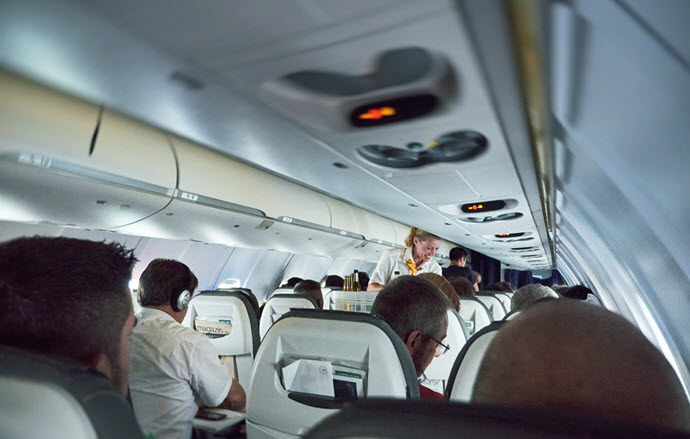By Ed Perkins, Tribune Content Agency
Late last year, American Airlines announced that it would offer a true premium economy service on wide-body planes starting this year. You can probably expect Delta and United to copy; that’s what they do. Adding true premium economy will bring the three U.S. giants up to par with Air Canada and many major European and Pacific competitors.
I talk about “true” premium economy because all three giants, along with Alaska, Frontier, Hawaiian, JetBlue and Hawaiian, have been offering diluted form improved economy, which I call “stretched” economy. It merely adds three to six extra inches of front-to-rear spacing, or “pitch,” to standard, narrow economy seats. A few lines include premium cabin service and a few extras; others just add the legroom. Prices adjust dynamically, but seldom go over a surcharge of $100.
But even stretched economy is a tight fit for many travelers: The regular economy seats are at least two inches too narrow to serve American male travelers, and those few extra inches of legroom don’t help much on an overnight flight. That’s why so many airlines are adopting true premium economy on wide-body planes used for intercontinental flights.
The typical front-to-rear spacing for true premium economy is seat rows at 38-inch pitch, compared with 28-31 inches for most economy services and 34-36 inches for stretched economy. The typical width is three to four extra inches of shoulder-level space: Although SeatGuru shows smaller width differences on most planes, premium economy’s double armrests and other spacings mean that the width difference is greater. And a few lines do even better than the standard.
These days, the norms for the “hard product” in premium economy are pretty consistent. Most lines install seats at 38-inch pitch with the number of seats in each row dependent on the plane model:
- Six seats per row on B767, configured 2-2-2.
- Seven seats per row in A330/340, A350, the upper deck of A380 and B787, configured 2-3-2.
- Eight seats per row on A380 lower deck, B747, and B777, configured 2-4-2.
Although I can’t detail every line’s “soft” product, almost all lines offer improved meal service, more generous baggage allowances and often priority boarding and dedicated check-in lines. True premium economy thus fills the ever-growing gap — actually a chasm — between economy and business class, for which the emerging norm is seats that recline to a flat bed.
But true premium economy’s superior product comes at a price. My recent comparison of prices for next summer showed that fare surcharge over regular economy ranged from 37 percent to 264 percent, with an average of 78 percent. Air France touts its premium economy for “40 percent more room,” and “40 percent more room for 78 percent more money” is not an easy sell. That’s why the premium economy cabins on most lines are small, probably catering to some combination of business travelers whose expense account can’t handle business class and a few upscale leisure travelers.
For the immediate future, you can expect both stretched and true premium economy to coexist:
American intends to retain both on at least some of its long-haul planes.
Delta and United will likely announce something this year.
Stretched economy will remain an option on most domestic 737, 757 and A320-family planes; nobody is even looking at a possible five-across premium option on those planes. Southwest remains a holdout, at least for now.
On intercontinental routes, Aeromexico, Air China, China Southern (all but 777-300ER), El Al, Finnair, KLM, Latam and Philippine, are, so far, sticking with stretched economy. Aer Lingus, Asiana, Iberia, Korean, South African and the big Gulf lines haven’t done anything yet, but you can expect many of them to add true premium economy in a year or two.
Premium economy is a big improvement over regular economy. Whether it’s big enough to justify the extra cost is up to you. But it sometimes goes on “sale,” so keep checking your options.
(Send e-mail to Ed Perkins at eperkins@mind.net. Also, check out Ed’s new rail travel website at Rail-Guru.com.)
(c) 2017 TRIBUNE CONTENT AGENCY, LLC. – Tribune Content Agency — January 17, 2017
Ed Perkins is a nationally syndicated travel columnist, with weekly columns appearing in three dozen U.S. newspapers. He was founding editor of Consumer Reports Travel Letter and has written for Business Traveller (London), Arthur Frommer’s Budget Travel, The New Yorker, and National Geographic Traveler. Send e-mail to Ed Perkins at eperkins@mind.net.


Leave a Reply